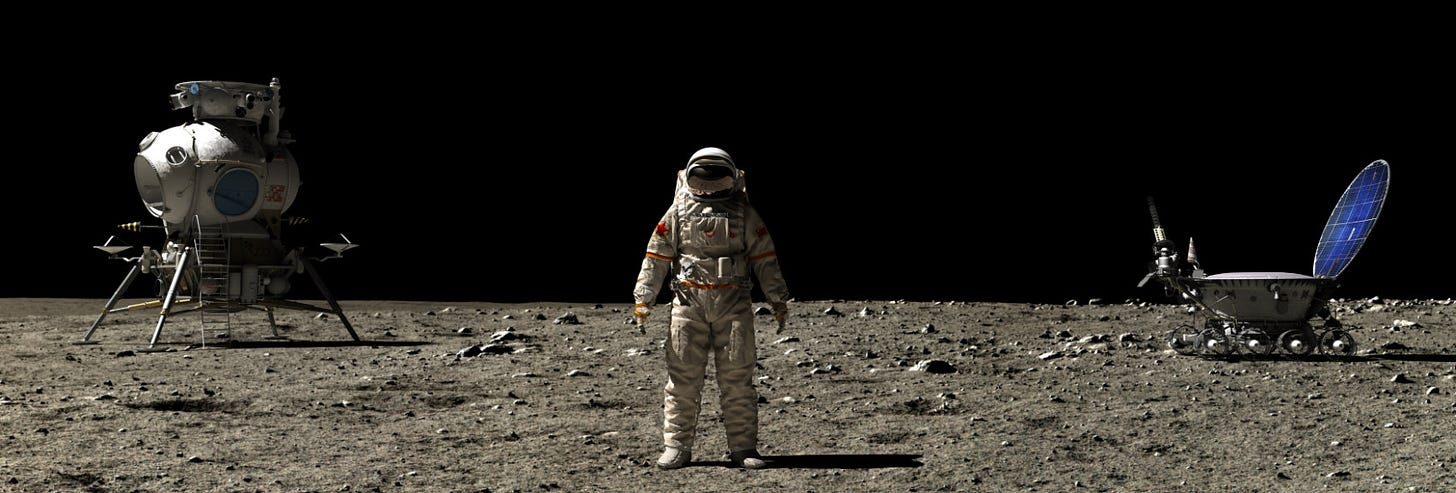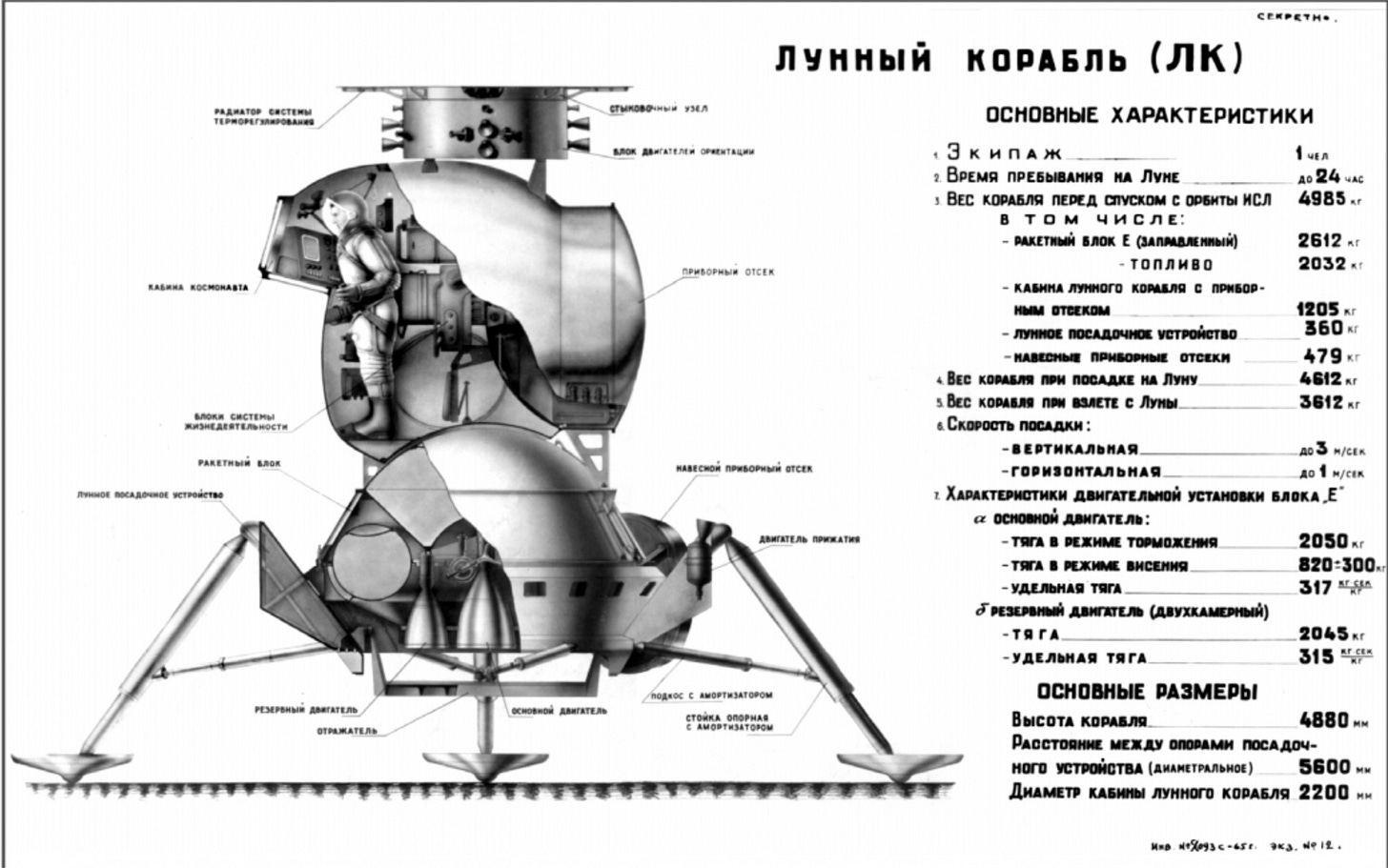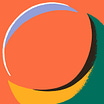This article is based on a translation of declassified RGANTD documents. It contains precise details of cosmonaut activities on the Moon, and the equipment they would use to achieve the mission objectives.
Successful L3 mission, art by Nick Stevens
As of 1967, Soviet planners projected 3 test launches of the N-1 (№ 3L, 4L, 5L), after which they believed the 6L rocket could be flown with crew. This turned out to be wildly optimistic.
The N1-L3 programme envisaged the flight of two Soviet cosmonauts to the Moon aboard the L3 complex, launched atop the N1 rocket. After entering lunar orbit, one astronaut was to remain on board the Lunar Reconnaissance Orbiter (LRO; 11F93, better known by the Russian-language acronym LOK), while the other was to land on the surface of the Moon in the Lunar Craft (LK; 11F94, generally known as the LK Lander).
L3 assembly, LK, LOK and upper engine blocks.
What was the astronaut to do on the Moon?
By 1967, Soviet scientists had drawn up a detailed "Programme of scientific research to be carried out by a cosmonaut on the Moon". This 19-page document was only recently declassified. It lists observations and experiments to be carried out by the single cosmonaut slated to reach the lunar surface. It specifies the basic requirements for photographing lunar objects and taking lunar rock samples, the sequence of operations, and a list of scientific and geological equipment to be used.
The LOK, the part that stayed in orbit around the Moon.
The main objectives of the scientific work by a cosmonaut on the Moon were:
Collecting samples of lunar rocks and lunar mineral structures
Photography (stereoscopic, with colour filters) of the surrounding landscape
Inspecting and photographing details of the surface topography, and the structure of cosmonaut footprints on the surface
Experiments on different types of mechanical impact on the lunar surface, contact with the surface, penetration, impact, drilling etc
Dosimetric monitoring of radiation levels
The scientific equipment included:
A stereo camera
A container for storing and lunar rock samples for transport back to Earth
A core extraction device, (drill)
A voice recorder
A radiation dosimeter
A set of handheld geological instruments
The geological equipment was to include:
A stick with retractable bayonet, to to determine the strength of the surface layer, and its depth
In addition, this stick would help the astronaut maintain balance
A shovel to loosen and gather lunar material and stones
A hammer to break out rock samples
A trowel to loosen rock samples
A sampling tube, for taking samples from up to 25 cm deep.
In addition the geology set would include, as secondary items:
An adhesiometer plate
Scales for weighing the planned amount of sample material
A brush for removing contaminants from the samples and sample container
A magnifying glass to visually inspect the structure of samples
A writing instrument for labelling samples
An instrument for determining azimuth
Markers for sampling locations, [the order of activities below confirms the cosmonaut was to take photographs including these markers]
A handheld magnet for separation of magnetic fraction [to separate magnetic material from rock samples?].
The planned order of the cosmonaut’s actions was as follows:
After exiting the lunar lander, the cosmonaut’s first priority was photography.
Next, the cosmonaut was to take samples of rocks and soil at three locations with different topographical features and structures.
The approximate target size for a single stone would be 4-5 cm (earth weight 200-300 g). The average terrestrial weight of the entire material sampled at one location would be 1.5-2 kg. Thus the total weight of the samples would be about 4.5-6 kg.
Having completed this work, the cosmonaut was to collect additional lunar material by taking core samples from depths of 0.6-1 m using an automatic drilling device. He would then return to the spacecraft and take photographs of the marked extraction points.
The cosmonaut would next weigh the sample container. If the material exceeded the specified weight limit, the cosmonaut was to discard a portion of the samples at his discretion. If the samples were below the weight limit, the cosmonaut would top up the container with lunar material from the immediate vicinity.
The cosmonaut would then carry the sample container and film cassettes into the LK Lander cabin.
He would leave the rest of the equipment on the lunar surface.
This research programme was designed for the first expedition to the Moon, and was meant to be refined subsequently.
Early version LK Lander. There are significant differences from the final version.
A note from Nick - the above text was edited and massively improved by Jeremy Stern. I am working with him on a book covering the various Soviet lunar programs.
This Edition’s Cool Image:
Based on a Zvezda Archive illustration, captions updated for clarity.
It is well worth noting some of the details in this diagram, based on the one found in “Russian Spacesuits” by Abramov and Skoog.
While the illustration is clearly stylised, it tells you what the Krechet Space Suit had to deal with, and gives an excellent view of the mission profile. I particularly draw your attention to:
Steps 3 and 7. The cosmonaut who stays in the LOK partially emerges, to guide the cosmonaut who goes down to the surface.
Step 6. The cosmonaut is shown using a Lunokhod to reach the spare LK Lander.
Also step 6. The cosmonaut is shown at the “lid” end of the Lunokhod - I have previously illustrated this with the cosmonaut at the other end. I’m not sure this new illustration makes sense - this would mean the Lunokhod moves in the reverse direction compared to the later, flown rovers.
Step 8. Note that the cosmonauts do not keep their space suits available, presumably a measure to save weight.
My take on the crewed Lunokhod.
This Edition’s Cool Link
It’s a bit dated, but is an excellent introduction to the Soviet crewed lunar programs, and is nicely illustrated.
That’s all folks!













It’s interesting that photography was their first priority on emergency from the lander. I wonder if they were to take a contingency sample, as Apollo did.
Was there a Soviet analogue to the Lunar Receiving Laboratory?
Nice write-up, Nick. I bought The Soviet Reach for the Moon when it was published. I've posted the link to the electronic copy in several places. At the time it was the first publication widely available with decent photos and information about the L3 lunar program. I noticed you also referenced the “Russian Spacesuits” by Abramov and Skoog book. It's my Go-To reference on the subject. Loved the illustrations you gave us in this edition of the Substack. I'm very much interested in more information about the lunar surface activities. There was no reference to placement of any scientific experiments like the Apollo ALSEP equipment. Is this true? Anyway, great edition. Thank You, Sir!